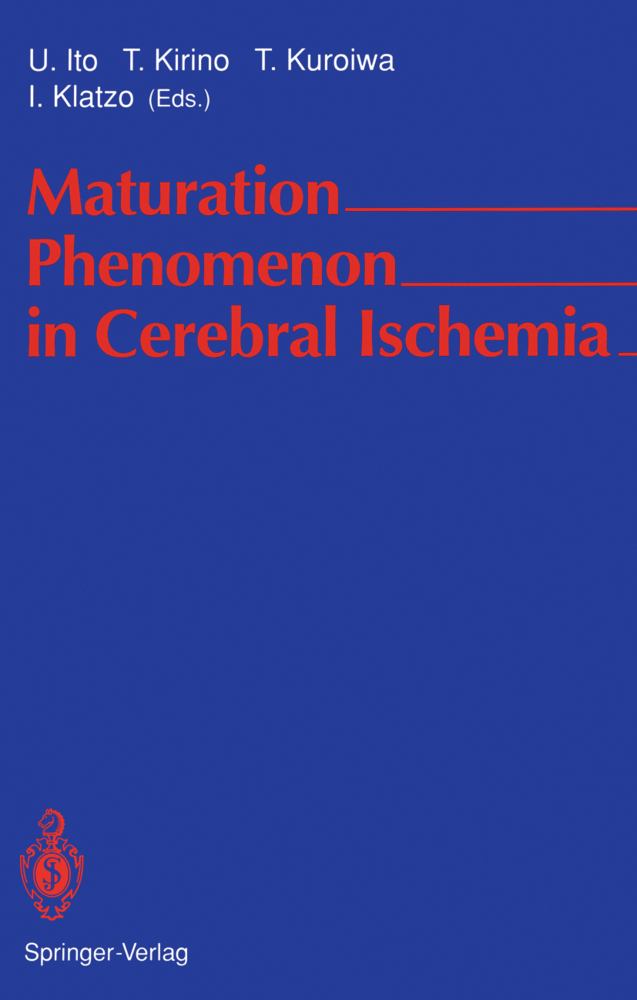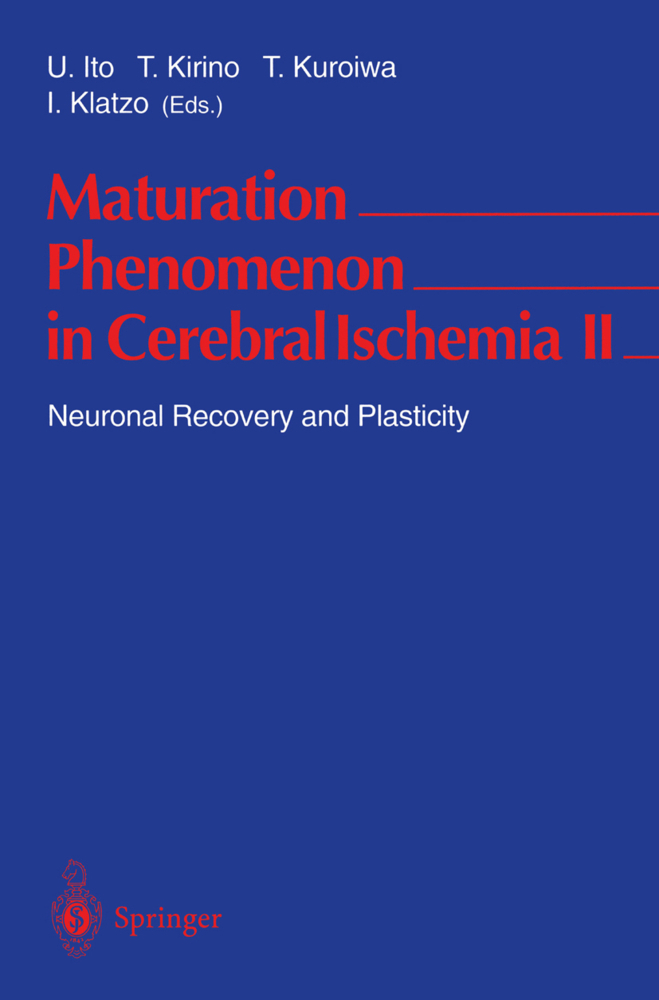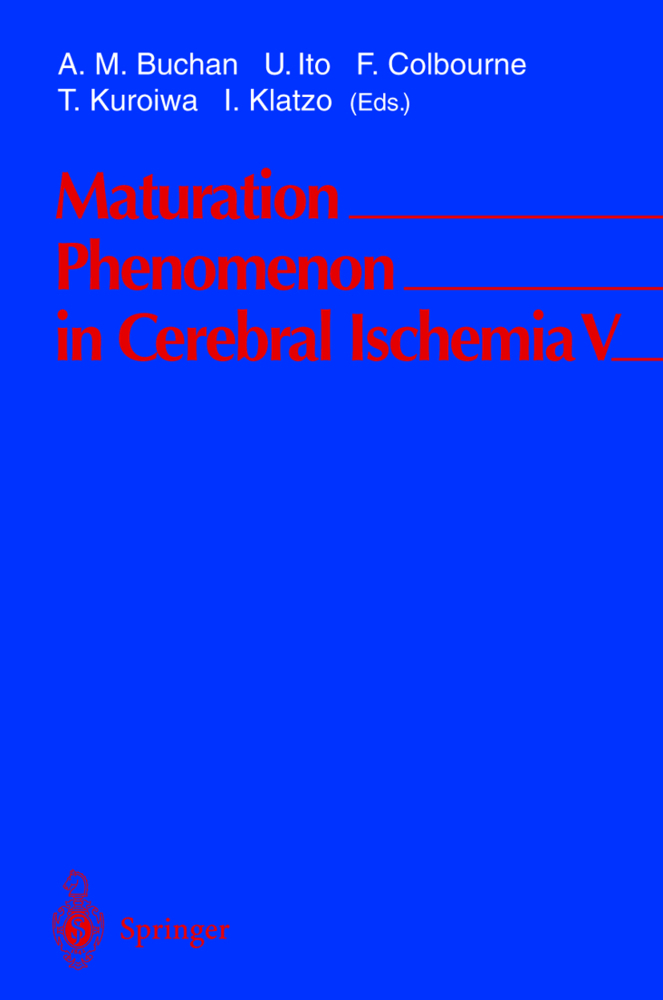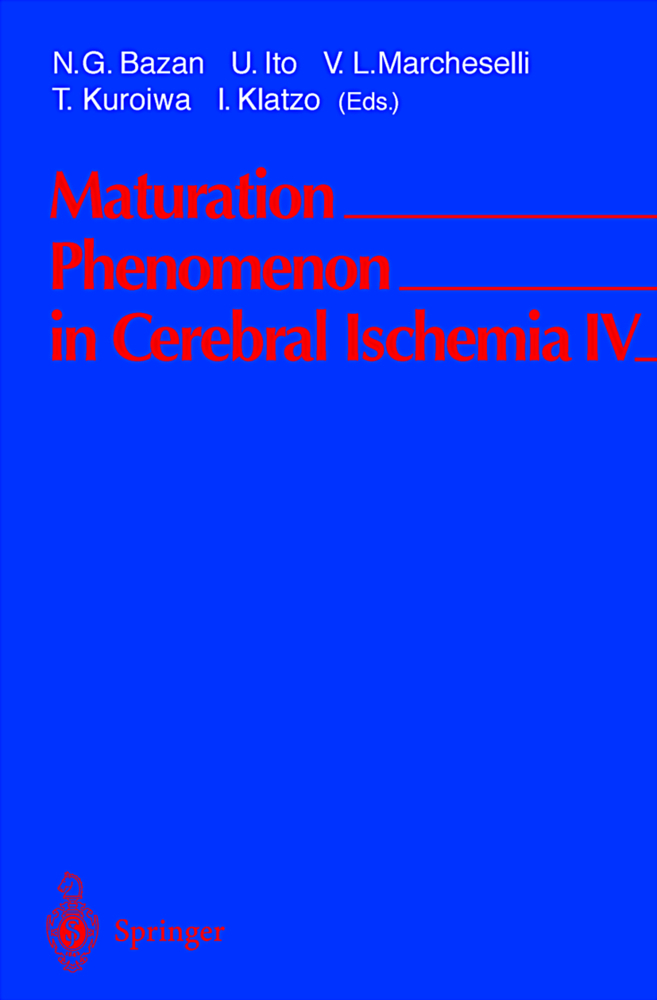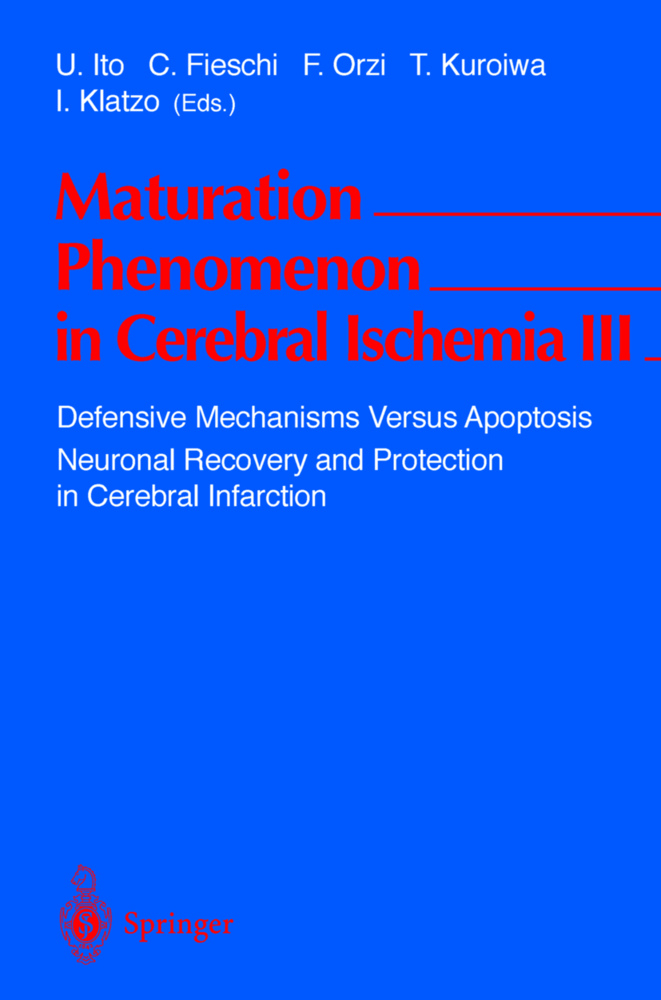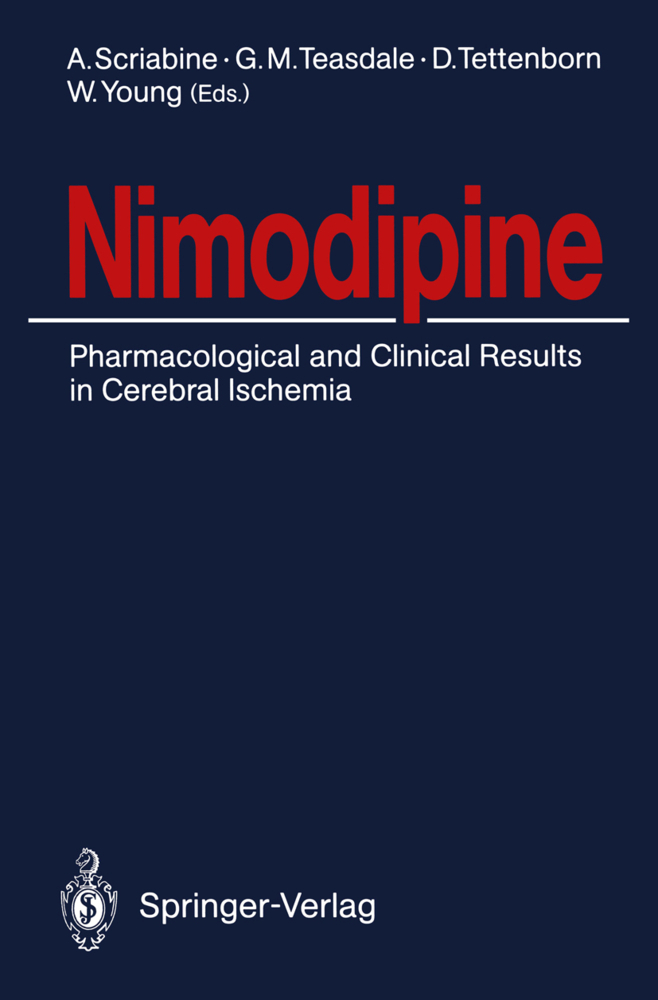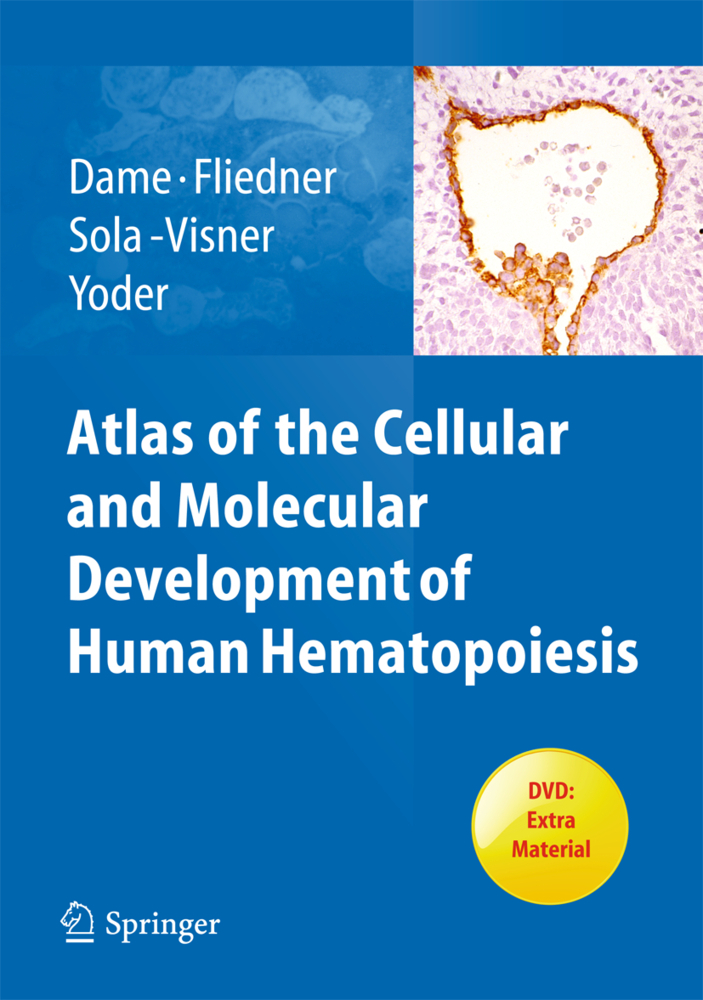Maturation Phenomenon in Cerebral Ischemia
Proceedings of the Satellite Symposium of the XIth International Congress of Neuropathology Tokyo, September 11-12, 1990
Maturation Phenomenon in Cerebral Ischemia
Proceedings of the Satellite Symposium of the XIth International Congress of Neuropathology Tokyo, September 11-12, 1990
It has been well recognized that following an ischemicinsult many nerve cells of the brain are not killedoutright, but may suffer a "delayed neuronal death" or evenrecover. This led to the concept of "maturation phenomenon"with its main implication that the maturation of ischemiclesions may provide a "window of opportunity" i.e. a periodof time when the injury to neuronal elements is stillreversible, and during which an application of propertherapeutic measures might be successful.The symposium on Maturation Phenomenon in Cerebral Ischemiawas the first international meeting focussed primarily onthis subject and the resulting publication containspresentations and discussionsby prominent researchersengaged in this field. This book should stimulate furtherresearch on potential of brain tissue for recovery, andparticularly with regard to a functional recovery of neuronssuffering from chronic ischemic injury.
Reorganization in the Gerbil Hippocampus After Ischemia-Induced Delayed Neuronal Death: Fate of Parvalbumin-Containing Neurons (with 2 Figures)
Changes in Hippocampal Ultrastructure After Ischemia with Long Survival Times (with 2 Figures)
Possible Role of Intracellular Calcium Translocation in the Maturation of Ischemic Damage (with 1 Figure)
Reversibility of Damage to Rat Cerebellar Purkinje Cells Following Ischemia (with 2 Figures)
Neuropathological Changes in Remote Areas After Focal Cerebral Ischemia (with 2 Figures)
Dynamics of Late Neuronal Changes in Global Cerebral Ischemia (with 2 Figures)
Role of Neuroexcitation in Maturation of Postischemic and Posttraumatic Injury (with 3 Figures)
Pharmacological Contradictions in Neurotoxicity of Excitatory Amino Acids as a Cause of Ischemic Injuries (with 2 Figures)
Involvement of Excitatory Transmitter Systems in Ischemia-Induced Damage to CA1 Pyramidal Cells, Dentate Hilus Neurons, and Purkinje's Cells (with 4 Figures)
Importance of Postischemic Neurotransmission in Delayed Neuronal Death (with 3 Figures)
Role of Altered Gene Expression in Development of Neuronal Changes After Ischemia (with 2 Figures)
Protein Synthesis and Calcium Uptake Following Complete Cerebral Ischemia of Rat Brain (with 2 Figures)
Ischemic Neuronal Injury Modified by Basic Fibroblast Growth Factor (with 3 Figures)
Simultaneous Mapping of Superoxide Free Radicals, Vascular Permeability, and Energy Metabolism in Forebrain Ischemic Lesions by a New Technique (with 3 Figures)
Carotid Artery Back Pressure and Postischemic Hyperthermia in theGerbil: Factors Influencing the Delayed Neuronal Death of the Hippocampal CA1 Sector (with 3 Figures)
Cerebral Ischemia in Adult and Young Mongolian Gerbils: Delayed Changes of Monoamines (with 2 Figures)
Effect of Recurrent Ischemia on the Rate of Brain Function Recovery in Monkeys (with 2 Figures)
Residual Oxygen Metabolism in Completely Ischemic Tissue of the Cat Brain: A Polarographic Method for Measuring Flow and Metabolism in the Microregion (with 2 Figures)
Synopsis of the Round Table Discussion.
Maturation of Ischemic Injuries Observed in Mongolian Gerbils: Introductory Remarks (with 3 Figures)
Maturational Death of the Neuron in Ischemic Brain Injury (with 2 Figures)Reorganization in the Gerbil Hippocampus After Ischemia-Induced Delayed Neuronal Death: Fate of Parvalbumin-Containing Neurons (with 2 Figures)
Changes in Hippocampal Ultrastructure After Ischemia with Long Survival Times (with 2 Figures)
Possible Role of Intracellular Calcium Translocation in the Maturation of Ischemic Damage (with 1 Figure)
Reversibility of Damage to Rat Cerebellar Purkinje Cells Following Ischemia (with 2 Figures)
Neuropathological Changes in Remote Areas After Focal Cerebral Ischemia (with 2 Figures)
Dynamics of Late Neuronal Changes in Global Cerebral Ischemia (with 2 Figures)
Role of Neuroexcitation in Maturation of Postischemic and Posttraumatic Injury (with 3 Figures)
Pharmacological Contradictions in Neurotoxicity of Excitatory Amino Acids as a Cause of Ischemic Injuries (with 2 Figures)
Involvement of Excitatory Transmitter Systems in Ischemia-Induced Damage to CA1 Pyramidal Cells, Dentate Hilus Neurons, and Purkinje's Cells (with 4 Figures)
Importance of Postischemic Neurotransmission in Delayed Neuronal Death (with 3 Figures)
Role of Altered Gene Expression in Development of Neuronal Changes After Ischemia (with 2 Figures)
Protein Synthesis and Calcium Uptake Following Complete Cerebral Ischemia of Rat Brain (with 2 Figures)
Ischemic Neuronal Injury Modified by Basic Fibroblast Growth Factor (with 3 Figures)
Simultaneous Mapping of Superoxide Free Radicals, Vascular Permeability, and Energy Metabolism in Forebrain Ischemic Lesions by a New Technique (with 3 Figures)
Carotid Artery Back Pressure and Postischemic Hyperthermia in theGerbil: Factors Influencing the Delayed Neuronal Death of the Hippocampal CA1 Sector (with 3 Figures)
Cerebral Ischemia in Adult and Young Mongolian Gerbils: Delayed Changes of Monoamines (with 2 Figures)
Effect of Recurrent Ischemia on the Rate of Brain Function Recovery in Monkeys (with 2 Figures)
Residual Oxygen Metabolism in Completely Ischemic Tissue of the Cat Brain: A Polarographic Method for Measuring Flow and Metabolism in the Microregion (with 2 Figures)
Synopsis of the Round Table Discussion.
Ito, U.
Kirino, T.
Kuroiwa, T.
Klatzo, I.
| ISBN | 978-3-540-54871-3 |
|---|---|
| Artikelnummer | 9783540548713 |
| Medientyp | Buch |
| Copyrightjahr | 1992 |
| Verlag | Springer, Berlin |
| Umfang | XVI, 208 Seiten |
| Abbildungen | XVI, 208 p. 34 illus. |
| Sprache | Englisch |

